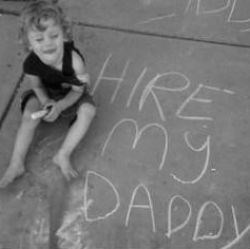by Paul Slaybaugh | Oct 9, 2010 | Home Selling, Scottsdale Real Estate
With the latest scuttlebutt in the housing industry centering around a rising political push for a large scale foreclosure moratorium by leading lending institutions, most are aware that Bank of America became the first to issue a temporary nationwide pause in foreclosures this past week. Though B of A is the first to stay their executions across all fifty states, JP Morgan Chase and GMAC agreed to halt foreclosures in the 23 states where foreclosure is a judicial process. The pressure to do so originated over procedural impropriety in several specific locales, and has snowballed into wholesale questioning of the internal processes of the major banks. Mounting concern over erroneous foreclosures spawned the voluntary cessation (expected to last several weeks). While Wells Fargo has spurned calls to do the same, it would not be surprising to see more institutions yield to the rising pressure and follow suit.
What does this mean? Plenty has already been written about this with homeowners facing foreclosure and prospective buyers in mind, so I won’t belabor those perspectives here. Suffice it to say that while any additional quality control that can prevent people from wrongly losing their homes to foreclosure would be a good thing, the upshot in terms of market reaction is likely to be a collective shrug of the shoulders. Not content to simply halt the actual act of foreclosure, B of A is temporarily taking their inventory off the market while the review is ongoing. It’s been posited that fewer listings will translate to a possible surge in prices, but this is pure mularky. The market simply does not react in a matter of a few weeks to any stimulus, as it takes time for consumers to make heads or tails out of new developments and how they translate to negotiable strength. On the contrary, I think this will make buyers who are already non-harried take even more of a wait and see approach. Rather than buying what is left, those who are not under a time crunch to get into a new house will probably just wait for the moratorium to end and for the withheld inventory to flood the market. In essence, we could be looking at an unintentional buying moratorium as well.
Though it would be foolish to anticipate a surge in values, the one segment of the consumptive spectrum that stands to gain from this turn of events is the non-distressed homeowner. With a small window opening for mom & pop home sellers to compete with significantly fewer bank homes for buyers, I would not be shocked at all to see a percentage gain of resale home sales while overall sales volume remains flat, or even declines slightly, in the coming weeks. I expect many buyers will choose to wait it out, but there are those who do not have the luxury of time. Be it a job relocation, family circumstances, etc, there are always buyers who need to buy now. With fewer distressed properties on the market, and likely buyer uncertainty over how this will translate to the short sale arena (will B of A process short sales while foreclosures are in limbo, or pause all such decisions? Will short sale sellers temporarily remove their homes from the market in anticipation of a reprieve?), this could be the traditional seller’s best opportunity to vie for buyers in quite some time.
Again, don’t misconstrue the knee-jerk hypothesis. The value of your home is not going to spike due to this temporary phenomenon, nor are you suddenly in the catbird’s seat. For those in an equitable position to sell, this window merely represents the best possibility to attract a buyer in months.
No screwing around – price your home right and get it sold while there are fewer alternatives for buyers. As a regular seller, with the tax credit gone as a buyer incentive and microscopically low interest rates and low prices not translating to appreciable gains in sales/values, you have to leverage every conceivable strength in this market to accomplish your goals.
Ready to sell your Scottsdale home? Contact us today to schedule a no-obligation consultation, but do it fast. When the moratorium ends and the holidays are fast approaching, it will be time to hunker down for another long, cold winter.

by Paul Slaybaugh | Jun 16, 2010 | Home Selling, Scottsdale Real Estate
Among the interesting turnabouts that abound in the Scottsdale Real Estate market as of late, the rental market has demonstrated surprising new strength. Where there was formerly a preponderance of housing options for prospective tenants over the last couple of years, what with all the struggling homeowners out there eager to find someone else to pay their mortgage while they shacked up in less costly digs, a noticeable contraction in available properties for lease is occurring. With more and more people walking away from their upside down homes, whether by necessity or by choice, the credit and financial hits they take in the process renders them radioactive to the purchasing option for years to come (though, some have perfected the “buy and bail” strategy of purchasing a new home before abandoning the current residence). As such, the rental market has become inundated with demand.
With this surge in demand and a subsequent decrease in supply, rental values have not only held firm, but have noticeably increased in the markets I work. From a purely anecdotal standpoint, I have been shocked by the level of competition for not only the properties I have had listed for lease recently, but for the tenants I have worked with to secure rental properties as well. Mind you, I am not simply referring to the low end pricing (sub $1000/month) where heightened competition is always to be expected, but in more expensive price ranges to boot. In particular, I am seeing a LOT of interest in properties that are renting in the $1400-1800 per month range.
Checking the latest statistics to see if what I have noticed is playing out on a larger scale, I see active Scottsdale rental listings are down to roughly 1800 units (as of ARMLS’s May figures). This marks a steady decline from an inventory that reached a high point of 2568 in November of 2008 and did not dip under the 2000 unit threshold until January 2010. The 5.19 months of rental housing supply (as determined by the current rate of absorption) is at its lowest point in years. Interestingly, the overall average rental rate has not shown a noticeable jump, despite my recent personal observations. Given the decrease in total inventory and increase in absorption (units leasing per month), however, I fully anticipate next month’s numbers to reflect a higher baseline average.
This shift in the rental market tells me two things:
1) Before deciding to walk away from a house that appears irretrievably underwater in terms of negative equity, homeowners (and potential future renters) really need to study their options carefully. If I had a nickel for every misguided homeowner who erroneously believed there was an unmitigated plethora of housing options, at bargain basement prices, waiting for them once they pulled the plug on the Bank of Extortion … er, I mean “America” … I could comfortably retire to my literary tinkerings. The assumption that lower selling prices go arm in arm with lower rental rates is patently false. Further, with all of the newfound competition for rental housing, your chewed up credit report will be scrutinized a bit more by potential landlords than most would expect. Sure, a human landlord may be more understanding of the recent economic woes than some faceless underwriter, but as in any free market, it always comes back to options. If there are renters out there with fewer credit issues and deeper pockets, you are going to get aced out. Please consider where your escape pod is heading before abandoning ship and scuttling that home turned financial Death Star. If there is no soft landing, how have you benefitted?
2. Our market may have reached (or is close to reaching) that sweet spot in which it makes sense for the homeowner with designs on a move-up purchase to revisit the rental potential of his/her existing home. While the notion of renting an existing house out (to offset the mortgage) to free oneself up to take advantage of the market conditions and purchase a considerably larger home for a fraction of its prior value is nothing new, the increasing strength in the rental market makes the strategy more feasible at present. The biggest hurdle to this play, other than deciding whether one is really cut out to become a landlord, remains the qualification process. Unless you are one of the fortunate few who maintain at least 25% equity in your home, you will essentially have to qualify to carry both loans (the existing house as well as the new one you would purchase). Even if you secure a tenant whose rent will cover the payment, you will be qualified for the new loan as if you were qualifying for both properties. If you have the means to do so, the time could be right to finally leverage the conditions that seemingly everybody and their brother’s mail carrier have already managed to exploit.
Whatever your goals for the Scottsdale Real Estate market, drop us an email or give us a call with your specific needs / questions. You might not be as trapped as you think.

(480) 220-2337 | paul@scottsdalepropertyshop.com
by Paul Slaybaugh | May 5, 2009 | Home Buying, Scottsdale Real Estate
The latest sales numbers are in, and the news is encouraging. Closed sales and pending sales are up rather dramatically and the listing inventory is sub 40,000 (37,000 and change at last glance) for the first time in recent memory. The underpinnings of the Valley Real Estate market have been statistically improving steadily with each passing month.
Is the bloom returning to the rose?
All signs seem pointed towards a market poised for recovery. Said recovery may, in hindsight, prove to already be well under way. Of course, bringing supply back in line with demand is the most tangible proof we have of a recovering market, but it doesn’t answer the question we Realtors can’t escape. We hear it in the line at Starbucks and when cornered by someone three martinis deep at cocktail parties:
“When are prices going to bottom out?”
That, my friends, is the 2 trillion dollar question. Let me preface my forthcoming opinion with the following. Anyone who tells you definitively where this elusive “bottom” is probably derived their opinion by studying flow charts, statistics, MADD Magazine and cutting the head off of a live chicken under the cover of midnight prior to the winter solstice.
My voodoo is no better than their voodoo.
That said, when I consult the astrological charts and the Arizona Regional MLS data, I am left with two distinct impressions. First, it is self evident that the house of Apollo will be foreclosed upon prior to the arrival of the harvest moon. Secondly, that the cocktail question cannot be properly answered in its current construct.
Here’s the way I see it. A segment of the market has already bottomed out. Not just any segment, mind you, but the primary driver of the past year’s Real Estate activity across the greater Phoenix and Scottsdale area. Of course, bank owned property is to what I am referring. With a disproportionate number of actual consummated transactions involving foreclosure properties at present, it is my humble opinion that the banks have already crashed their values through the floor. Attracting multiple offers and bidding situations in many instances, they would be hard pressed to erode pricing further now that demand is lined up around the corner in the form of cash laden investors.
The next part of the equation, though, might be difficult to swallow for Valley homeowners (A + B = oh Crap!). With foreclosure properties really driving pricing, few traditional sellers have been able to compete. Foreclosures have sold at record clips while resales have lagged behind their typical share of the market. As such, a gulf has opened up between the bank properties which are selling and the non-bank owned homes that are collecting dust at non-competitive prices. For the market at large to officially “bottom out” in my opinion, resale prices still need to fall further to decrease the gap. Buyers need a reason to start buying resale homes again, and that reason is all wrapped up in pricing. Most folks would prefer to buy a well maintained home from a mom and pop seller than an abandoned bank owned property, but not if it is priced a couple hundred thousand dollars higher.
Synopsis: I think the lowest prices that the Valley will see are presently or very nearly at hand because there is a great deal of demand for these homes. There will be good values still to come as resale prices drift further down, but don’t expect the bank owned bargains you are seeing today to get substantially better in the coming weeks and months.
As the title suggests, I think the summer will tell the tale of our market’s health. The spring is always our most active season, so I want to see how the market reacts when the seasonal buyers leave town. Will we retain the momentum from a brisk spring or will we recede back into the doldrums as the mercury rises? I predict the former, but again, that’s just my voodoo.
It wouldn’t be a Real Estate post without a call to action, so I’ll leave you with this. Wherever prices are next year, interest rates are highly unlikely to be in the 4’s like they are presently. If you’re asking me, and even if you’re not, I think it’s time to buy. Last call for bargain shoppers is looming.
Now, about this chicken …



